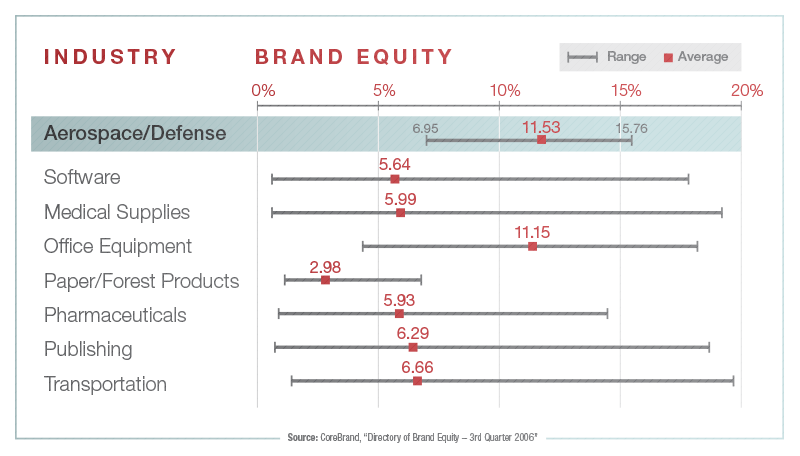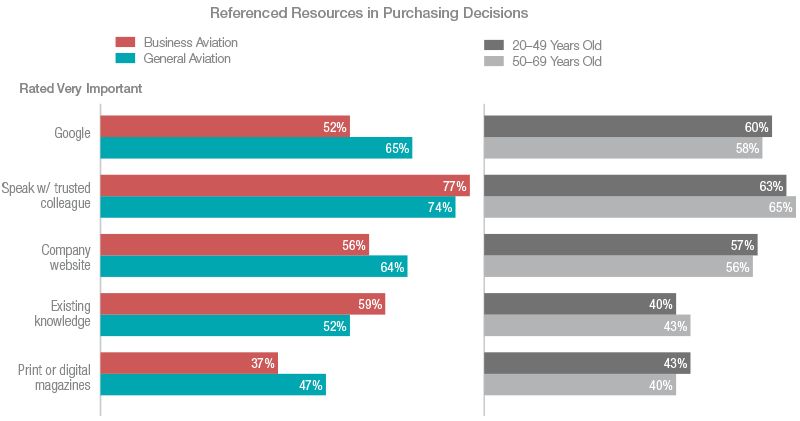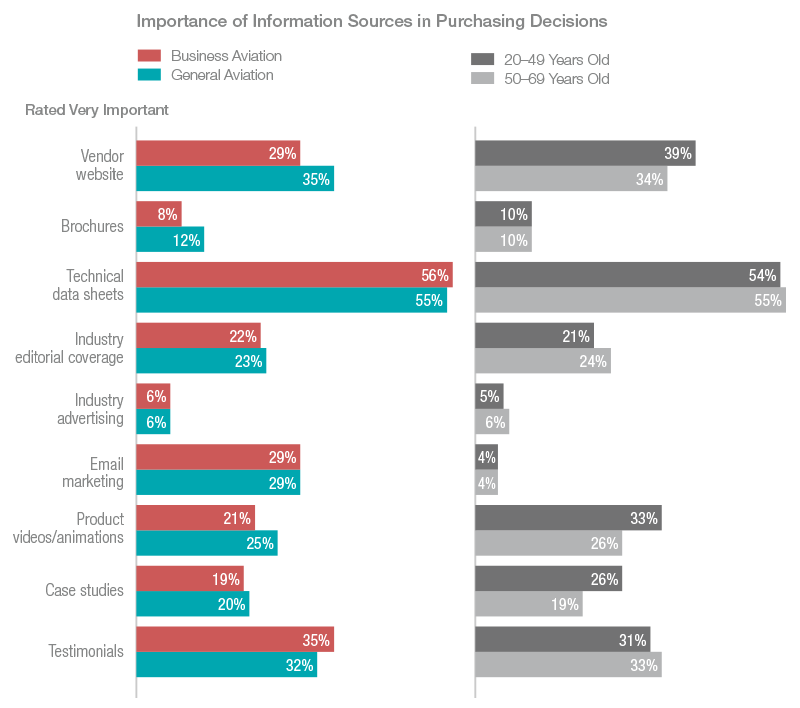Category: How-Tos
Your First Steps Toward a Meaningful 2017 Marketing Plan
It’s time to start putting together your 2017 marketing plan. This is a big effort that will drive your work in the year ahead, encompassing strategy, messaging, tactics, execution, budget, and schedule.
It can all seem overwhelming, but it doesn’t have to be — if you follow our lead.
When BDN works with a new client we often start with a Discovery and Assessment session, and this is a good place for you to start, too. Following our detailed marketing planner, this structured information-gathering session includes a SWOT analysis, team interviews, discussion and brainstorming.
The intent is to gain an in-depth understanding of your business and sales process while establishing measurable goals and objectives for the marketing effort. It should result in a working diagnosis, preliminary ideas and an overall budget range, followed by a market pulse and in many cases, more detailed research.
In this week’s audio program, Lisa Sifuentes, Ashley Cutler and Nick Markwardt discuss the BDN discovery and assessment process, why it’s important, and how to make it work for you.
Play the session below or click here to download the MP3.

[vc_separator type=”” size=”” icon=”plane”]
Interested in this topic? You may also want to download the BDN Marketing Planner: http://bdnaerospace.com/marketingplan/
Audio: Lead Generation Case Study
This Marketing Flight Manual is downloadable audio content.
Is lead generation important to your business? This week, we sit down with Business Development Executive Ashley Cutler and VP of Client Services Lisa Sifuentes as they discuss their efforts on a recent lead generation campaign with host and Senior Designer Nick Markwardt. As you will hear, the results were nothing short of astounding.
Play this week’s session below or click here to download the MP3.

The full case study, including additional metrics and tips for improving your own lead generation efforts, will be available for download here on the Marketing Flight Manual next week.
[vc_separator type=”” size=”” icon=”plane”]
Lead Generation resources you might also be interested in:
How to Get the Aerospace Marketing Budget You Need
 New year. New opportunities. Same inadequate marketing budget.
New year. New opportunities. Same inadequate marketing budget.
Let’s face it, the budgeting process at too many aerospace and defense companies is flawed. Budgets may be dictated by people who don’t understand marketing…based on last year’s numbers instead of this year’s realities…or result from a last-minute fire drill because the boss wants numbers now.
Next year is going to be different. And it starts right here.
[vc_separator type=”” size=”” icon=”plane”]
Don’t Wait
Start mapping out your goals, strategy, plan and budget requirements now. Go to your boss well in advance of budget season with a buttoned-up, airtight business presentation that changes the conversation about the role, purpose and needs of a professional marketing organization. Elevate the discussion. Stop talking about outputs — you both should be focused on outcomes. Don’t spend time debating the merits of specific trade shows, advertising or other low-level tactics. They are simply a means to an end and should be left to the marketing team.
Actionable Idea: This marketing plan template is a good way to get started.
Have a Plan
Develop and present a plan that closely supports your organization’s business goals. Explain to your boss what you are recommending, and why, always linking back to expected outcomes. Show how marketing is a necessary investment — not a necessary evil — that is essential to business success.
Actionable Idea: Set the tone for an elevated discussion with an unexpected presentation format, like Prezi, or with a website or portal purpose-built and devoted to housing your proposed marketing program. Use the site to showcase your plan and offer it as a way for the boss to always have real-time digital access and visibility to marketing plans, activities and progress.
Use Data
In addition to a plan and business case, show the boss that your request is appropriate and supported by industry benchmarks. Brainrider reports that B2B marketing budgets as a percentage of total gross revenues remain steady at 2 percent, and other benchmarking sources show it’s closer to 5 percent. In our experience, aerospace businesses tend to spend less. Either way, the numbers need to be adjusted for new businesses, product launches, rebranding and other special circumstances.
Actionable Idea: Showing the boss that you are aware of best practices in budget allocation is also important, and referring to data bolsters your case.
Be Accountable
Establish and track three-to-five relevant Key Performance Indicators (KPIs) as agreed-on measures of success. Forget about vanity metrics. Impact Branding suggests five truly meaningful KPIs and explains how to calculate each one here.
Customer Lifetime Value – Understanding the value of a new customer can help you decide how much to spend on marketing.
Customer Acquisition Cost – Allocate your budget wisely by investing in the channels and tactics that have the lowest acquisition cost.
Sales Response Time – Customers are well on their way to making a decision before they ever contact you, so when they do reach out they are sales-ready. Don’t keep them waiting.
Inbound Links – Inbound links help SEO but also support brand awareness and authority.
Ratio of Website Leads to Marketing Qualified Leads – Too many unqualified leads waste precious resources but do little to drive results.
Actionable Idea: Post and maintain digital dashboards on your marketing website or portal.
Tell us about your budgeting process and how you get the resources you need. And, if you liked this post you may also enjoy our recent audio presentation. It provides actionable ideas for budget-friendly marketing.
Audio: Budget-Friendly Marketing
This week, BDN Aerospace Marketing is venturing into the world of downloadable audio content.
In this, our first audio installment, BDN founding partner Kyle Davis and VP of Client Services Lisa Sifuentes share some of their favorite ideas for getting the most out of a tight marketing budget. Senior Designer Nick Markwardt guides the discussion as we touch on topics ranging from developing an annual plan and leveraging digital tools, to identifying and challenging budget-sapping “sacred cows.” In just 15 content-filled minutes, we reveal that good marketing doesn’t have to be expensive marketing.
Play this week’s session below or click here to download the MP3.

Resources mentioned in the show:
Realize the Full Value of Your Aerospace Business Brand

Taking on a branding or rebranding program for your aerospace business is not for the faint of heart. Brand work requires discipline, focus, commitment and, above all, honesty.
In our last edition of the Flight Manual we listed 10 warning signs that you might have a weak brand. This week, courtesy of Lippincott, we are providing a list of questions to jump start the branding discussion internally.
If you think you have a branding problem and want to take steps to address it internally, we suggest starting with a very small team of strategically minded leaders who are willing to take an unflinching look at your business and answer these questions. There is no room for ego or living in the past, and this is not a job for a large committee.
This more detailed assessment will not be easy, but it is a necessary step in further assessing the health of your brand and getting internal alignment on how or if to proceed, which is critical.
Are you faced with skeptics who argue that branding is not important to aerospace and defense businesses? This data from the Harvard Business Review speaks for itself.

Bear in mind that these questions are just a starting point. Audience research is advisable to validate your internal assumptions and get a true picture of how you are perceived.
- Does our reputation immediately put us on our customers’ mental short lists for their next big orders or programs? How do we know one way or another? If we don’t know, how do we plan to find out?
- Are we on our customers’ preferred supplier lists? If so, where do we place, and how does that compare to our place last year or two years ago? If we’re not on the list, why is that and what do we expect to do about it?
- Does our brand help us to hire world-class talent? What does our brand stand for with potential recruits? Do we even know? For that matter, what do our employees think about our brand — or about any of our product brands? Are they proud of the name—or ashamed of it? Do they encourage or discourage others to join the company?
- Could our brand help us win a bid if reputation were the deciding factor? If not, why not? Why might our competitor’s brand help them win instead?
- What does our brand say about us to potential new customers? Does our brand give us entrée to expand into adjacent markets? To take on higher value-added roles such as consulting services? Or are we forever painted as one particular kind of company, unable to do anything different?
- To what extent is our brand being eclipsed as our big customers or channel partners consolidate and become better-known to end customers and Wall Street?
- What do we need to do to keep our brand from disappearing?
- Do investors really know us? How does Wall Street describe us? How does that square with how we see ourselves?
- Do we have the right mix of brands to go to market? Do our brands fit together logically? Are we supporting and spending on the right brands?
- How smart are we about our own brand? What should our brand stand for? Can we describe our brand strategy in a 20-second elevator pitch? What’s different about it? What does it contribute to the bottom line? Which customer touchpoints make the biggest difference to our brand?
- Are we actually living the brand? Do our employees know how to deliver our brand? Do they have the tools to do so?
Source: Lippincott originally published these 10 “Call to Action” questions in an excellent resource called “The Rise and Rise of the B2B Brand.”
Up Next
Moving Ahead: Your Blueprint for Branding
Also
If you liked this blog you may also want to read about the “5 Branding Myths that are Hurting Your Aerospace Business.”
10 insider secrets to getting your aerospace news published
 This week we are pleased to bring you a guest blog written by Jeremy Parkin, publisher of HeliHub.com. Jeremy has generously provided us with highly specific, actionable advice about what journalists do and not want from aerospace marketers in their PR outreach efforts, and his guidance is spot on. Read and follow these 10 tips and your media profile will improve — guaranteed.
This week we are pleased to bring you a guest blog written by Jeremy Parkin, publisher of HeliHub.com. Jeremy has generously provided us with highly specific, actionable advice about what journalists do and not want from aerospace marketers in their PR outreach efforts, and his guidance is spot on. Read and follow these 10 tips and your media profile will improve — guaranteed.
Editors are busy people, but you want your news item to get read and used. The more your stories, images and videos can be seen, the more your organisational profile will rise and be recognized compared to your competitors. Journalists could be out of their office, so these tips will help you reach people who may work for extended periods of time off a smart phone or tablet.
A key part of the process is to present the information in the most accessible way, and from my experience launching and building the world’s first helicopter industry news website, I hope these tips will guide you to better success in promoting your news. I also have a significant background in the IT industry, particularly social media, and I hope these insights assist in that arena, too.
- Document formats The text of your press release needs to be easily accessible by an editor. You want them to cut and paste quotes from your key people. We are much less likely to use a PDF press release and will prioritize a Word document. Better still, put the text of your press release in the body of an email like Airbus Helicopters does. Avoid sending press releases as attachments, and don’t send multiple languages of the same text in the same email – our automatic translation software gets very confused when Turbomeca (now Safran) send English and French in the body of the same email message. These rules apply irrespective of whether you send emails direct, or use an email marketing system such as MailChimp.
- Multiple stories If you are sending two stories, send them as separate emails, ideally a week or more apart, and ensure they are distinctly different. A few years back, Bell Helicopter took to issuing a new press release for every single country that approved a higher MTOW for the 429 model, in some cases countries where they needed lots of optimism to even sell an aircraft. That soon became a “Boy Who Cried Wolf” situation and we exercised the [Del] button.
- How many images? Every press release needs an image – the saying, “A picture is worth 1,000 words” still holds true. Some say multiple images mean bigger (and slower) emails which could be quarantined by an email server, so consider supplying images via a link to a public-access folder on Dropbox.com like MD Helicopters do.
- Image File Format As HeliHub.com is entirely online, we prefer JPG. Media outlets that encumber themselves with hard copy issues may prefer PNG but will still be able to handle JPG. Images embedded into a PDF are ignored as too difficult to extract, even if it is technically possible.
- Image Size To present your image at a quality level which can be used, the minimum dimension should be 2000 pixels. With many smartphones capable of taking images or 3-4000 pixels, there is no excuse. Over half the images we receive are 1000 pixels across or less, and we ignore them. Be careful using a wire service. as some of them restrict image size and force the reader to sign up to something to get full-size images — the chances they will sign up are low.
- Presenting the subject in an Image Flying means wings or rotor blades, and these make for landscape images (wider than height). But the editor may have a portrait (taller than width) gap to fill. Leave “editing space” around the subject. At HeliHub.com we post two news-related images to Instagram every weekday, and that usually means square images. We also change our Twitter header image weekly – and that needs an image three times wider than its height.
- Lighting and weather We ignore dreary photos unless the subject is really important. Improve your images using free software such as GIMP. Very recently the image of the third AW609 tiltrotor prototype needed editing time as it looked like it was taken in a rainstorm.
- Corporate image bank Sometimes an editor will prefer to use your corporate logo, and you should have these available on (or from) your website, along with head shots of key people in your organisation. Consider using a free service like OpenBrand.com to host these, like Helipaddy does.
- Video format/location Press release video is still rare, but the click-through to a video online is remarkably high, so the cost may be worth the effort, even if the video is less than 60 seconds long. Minimum format is HD these days, and some in 4K. Only a few aviation organisations are using 360-degree videos, but this will be the way ahead for aircraft interiors or to show details of an equipment installation. Do not save videos on your own website, but instead on YouTube, Vimeo or Wistia so they can then be embedded easily into a story online. The vicarious benefit is the extra views from the search traffic of those sites – remember, YouTube is the world’s second biggest search engine.
- Compressed file formats Do not submit ZIP files; they are too much hassle. People who ZIP a JPG file are demonstrating that they don’t know that JPG format is already a compressed file format.
Interested in more information about working with the aerospace and defense news media? BDN has compiled a complete PR toolkit full of tools and tips to improve your skills and your results. Tons of other free aerospace marketing resources are also available for download. View the entire library here.
How to market and sell to GA and BA audiences
This final installment in our series on purchasing behavior in General Aviation (GA) and Business Aviation (BA) seeks to better understand the marketing tactics that are likely to be most effective with these audiences.
We asked respondents to rate the importance of various information sources they may reference during the decision-making process and were surprised to learn that technical data sheets are strongly favored, regardless of age or market segment. Fifty-six percent of respondents consider data sheets very important, and an additional 35% see them as moderately important — that’s 91% of respondents.
Regardless of age or market, respondents also value testimonials, vendor websites and product video/animations, but industry advertising ranks dead last with all groups surveyed.
How much of your marketing budget is devoted to advertising or brochures? If you are spending a significant amount on these items it might be time to reconsider and reallocate to other resources that buyers find more important.
Who, among human information sources is least valued? Sales reps. Only 9% on average consider sales reps very important. In-person demos or other direct experience rates the highest, followed closely by industry contacts and friends. Distributors or dealers and trade shows fare only slightly better than sales reps. We were most surprised by the rather mediocre performance of trade shows, especially with the BA respondents, who also place greater value on their industry contacts and friends than do the GA respondents.

It turns out that no one, regardless of age or market segment, wants to be sold, either by sales reps, or dealers, or at trade shows. This tells us that an inbound marketing approach, where businesses draw customers to them by providing helpful content (and not sales pitches), could have great utility and value for aviation marketers.
We also asked respondents what resources they refer to during their consideration and evaluation process prior to making a purchase. All respondents prefer to speak with trusted colleagues over Google searches and referencing company websites. BA respondents place more value on their existing knowledge, while print and digital magazines rank last with everyone.
But when you whittle down those choices and ask respondents to pick just one resource, speaking with trusted colleagues is picked 43% of the time, followed by a big drop to 14% using Google, then about a 50% drop to the other “top” choices such as website, existing knowledge and magazines.

As we keep seeing throughout this series, people trust their own experiences and the opinions of friends and colleagues; performance is king; brands are not important; and no one wants to be sold.
For marketers, the keys to the kingdom are in finding ways to allow more people to use the product/service and then turn those users into unpaid evangelists. Work hard to make non-sales-y, factual and data-driven information available via multiple channels, including the web. And look carefully at the investment being made in trade shows, brochures and advertising. You may find it wise to re-allocate some of those funds to product demos, content marketing or referral programs.
To learn more about buying behavior in GA and BA, reference the other blogs in this series here and here. To subscribe to this blog and enjoy weekly email delivery, click here.
To approach your marketing in a more strategic fashion, download this easy-to-use marketing planner. It’s one of the most popular resources we offer.
Website Basics Checklist
We’re capping off February’s month-long focus on websites with a checklist to guide you through the web development process.
Following these guidelines will ensure that your new website is built on a solid foundation. Or, use it to assess your current site and identify areas in need of improvement.
In addition to viewing the checklist below, you can download and save it for future reference.
Everything You Need for 2016 Planning
 Thanksgiving will be here in the blink of an eye. Christmas is just around the corner. If you have not already started to write next year’s marketing plan, it’s time to get started now.
Thanksgiving will be here in the blink of an eye. Christmas is just around the corner. If you have not already started to write next year’s marketing plan, it’s time to get started now.
If you plan to go it alone, and write the plan yourself, this guide will be invaluable. If it’s time to hire an outside firm, we have a resource for that, too.
Here, all of the helpful tools and information we’ve been sharing in 2015 have been consolidated into a master guide for 2016 planning. We hope it’s useful and welcome your feedback and ideas for improvement.
Let’s get started and take it step by step.
Step 1. Information & Understanding
It’s important to build on a foundation of solid knowledge, so you’ll want to do a complete situation analysis. Start by ensuring that you know everything there is to know about your organization’s products, services, channels, markets, and plans for the year ahead. Will there be new products or certifications? Improvements to existing products? New channels to market? Assess your competition and do an honest SWOT analysis. Interview key personnel in other relevant organizations. Conduct market research if appropriate.
Step 2. Establish Goals
Talk to management. Talk to sales. Take the time to uncover what matters to them. What do they expect marketing to contribute in 2016? What do they want marketing to contribute? Specifically, what are the sales goals and priorities for the year ahead? How can marketing create an environment conducive to generating leads and closing sales? Ensuring that marketing and sales work in partnership (using a CRM system for tracking) is more important than ever. It will benefit both organizations and your company as a whole.
Use what you learn to document 3-5 clear, specific, measurable goals. Here is a highly simplified example to kick off the process.
Goal: Grow legacy product sales by 5% to $100 million.
Market 1: Fixed-wing commercial, Domestic, $10M International, $30M
Market 2: Rotorcraft, military, DoD, $25M, International, $35M
Goal: Grow new product sales by 10% to $50 million.
Market 1: Military fixed wing products, $30M, International only
Market 2: Commercial fixed-wing products, $20M, Domestic, $15M, International, $5M
Goal: Launch a new certified product in Q3. Achieve first 10 sales by year-end.
Market: Commercial rotorcraft
Of course, your plan will delve deeper into each identified market, listing specific countries, sub-markets, and customer opportunities. You will also want to develop customer personas and ensure understanding of their pain points and your relevant solutions.
The steps that follow will then support each of these goals.
Step 3. Strategy & Messaging
This is where your experience, expertise and creativity fuse to ignite a strategy that will drive success.
Will you structure a traditional integrated marketing campaign? Will you make the leap to an inbound marketing program using marketing automation? Perhaps you will launch a dealer outreach program, or include a higher-level branding campaign to reposition your company in the hearts and minds of customers.
The possibilities are endless, and your strategy should be driven by your goals, markets and, in some cases, budget realities.
The right messaging and creative approach are critically important. You’ll want to develop compelling value propositions, supporting messaging and, if appropriate, a brand promise and “elevator speech.”
Your value proposition is the heart and soul of your marketing program, so spend time to get it right. When people read your value proposition they should have an “aha” moment and intuitively understand exactly who you are, what you do, and why they should care.
All of this, and more, is covered in the BDN Marketing Planner.
Step 4: Tactics & Tools
From social media and advertising to white papers and infographics, there are more marketing tactics and tools than ever before. Choose your tactics based on what you want to accomplish. For example, the tactics used to build awareness are different than those used to establish domain expertise. BDN has developed tools and kits designed to help you master the use of specific tactics, including: Digital, Public Relations, and Trade Shows.
Step 5: Budget & Measurement
A recent study by Forrester Research showed that on average, 2015 b-to-b marketing budgets make up 7% of revenue, up from 4% in 2014. In our experience, aerospace and aviation companies tend to spend less. We strongly encourage you to build your budget based on accepted b-to-b benchmarks, and show management how you will deliver a return on its investment. Ask for what you need to be successful instead of trying (often in vain) to get by with a budget built in a vacuum. This white paper & checklist should help.
Linking marketing investment to measurable results is imperative, so make sure you are known for outcomes versus outputs. Always develop metrics and a control process to justify the requested budget to management, and monitor performance of the plan. Marketing communications plans call for specific timeframes and specific performance standards — these are the metrics of your plan. Be sure to check out BDN’s Marketing Planner — there is a section devoted to measurement, with helpful tools and resources.
It’s no fun starting the New Year already feeling behind. So start planning now. You’ll be finished before the holidays and can start 2016 feeling in charge and in control.
How Selective List Building Drives Results: A BDN Case Study
 Building and using lists for targeted marketing outreach programs is important to your marketing program, but where is it all leading?
Building and using lists for targeted marketing outreach programs is important to your marketing program, but where is it all leading?
Is everyone on the list subjected to a one-way onslaught of interruptive sales messages? Or are you using a permission-based approach where the target actually wants and welcomes the information and messages they receive? And what about the legal and ethical implications of your email-based marketing program?
Legitimate email marketing providers will not allow the use of purchased lists, and though it is permitted under CAN-SPAM laws, you can still be labeled a spammer if recipients complain. The solution is to provide great content and allow your target audience to opt in or subscribe. That’s exactly what BDN has done with our own email marketing, and our experience helps illustrate the approach.
One of our favorite blogs explains that that “the difference between a lead and a subscriber is akin to the difference between a date and a marriage. Both are important relationships, but one often requires more commitment than the other.”
They go on to say that a subscriber is much more valuable than a lead because subscribers have made a commitment and are actively engaging in a relationship with you. A lead, on the other hand, is completely non-committal, always keeping you at arm’s length. One is likely to buy from you in the future and the other — not so much.
BDN is making a move from interruptive to permission-based marketing, and here’s what we have learned.
In one month our company has built a list of qualified leads, and it’s growing rapidly. We are reaching fewer people overall, but the people we do reach actually want to hear from us.
In the past, when we sent our messages to a large, unqualified list of industry marketers , the results were uninspiring — although list building has to start somewhere.
Our performance was poor, with significantly below industry average rates for opens and click-throughs, and an above-average number of unsubscribe requests.
Here’s where we are today. In just one month we have built a list of 70+ qualified leads and our performance is top notch.
- Our open rate (58%) is 37% above the industry average of 21%
- Our click-through rate (24%) is 22% above the industry average of 2%
- We have had no unsubscribe requests. The average is .53%
- We are ranked as a great quality sender with no spam complaints, and no hard or soft bounces.
What’s more, thanks to the new list, web traffic has skyrocketed. The first email alone brought 57 new visitors in just one day, and the momentum continues to build.
Tips and Tricks to Gain Subscribers
- Install SumoMe. BDN has collected 23 email addresses in less than a month using the free version of the app. (We could upgrade and would probably collect more)
- Gate content on your website and include an opt-in button
- Promote on your homepage
- Promote in email signatures
- Promote at the bottom of eblasts
- Promote on social media
- Add a list builder to Facebook
For more information about the difference between leads and subscribers, see this SBI blog. This BannerView article has more information about the legal and ethical implications of email marketing. For more analogies about how marketing is like dating, visit BDN.
You might also be interested in Do You Have What It Takes To Succeed With The Aerospace News Media? or Is It Time To Hire An Outside Marketing Firm?


